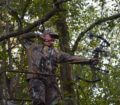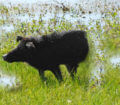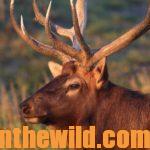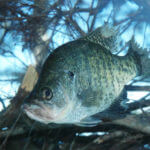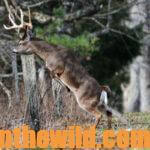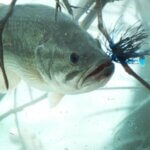Editor’s Note: To improve the habitat and the amount of wildlife on your hunting lands, hunt coyotes, feral hogs, foxes, raccoons, possums and bobcats. The more predators you can remove from the property you hunt between now and deer season, the more you’ll protect wildlife habitat, and the more food your wildlife will have. As Michael Johnson, a predator trapper and hunter from Plainfield, Georgia, explains, “Since I’ve been hunting these predators on my family’s land, we’ve seen a tremendous increase in the number of turkeys. I trap predators too because they’re very-smart animals and often may spook before we can take our shots. Predators are like cockroaches – you can beat their numbers back but never entirely get rid of them.”
 Most states have far-more feral hogs than those needed or ever wanted. Biologists estimate today that 9-million wild pigs live in the U.S. So, by hunting wild pigs, you can enjoy an outstanding barbecue and help the environment at the same time. When the early explorers like Hernando de Soto landed in the South to explore the New World and make settlements, they brought their cattle and hogs with them for food. The hogs and cattle were allowed to roam free. When the early explorers and settlers wanted meat, they went into the woods and rounded-up cattle and hogs to slaughter. But all the cattle and hogs never got rounded-up. In Florida and Alabama, there’s been feral hogs since that time. Today, feral pigs have spread to 35 states.
Most states have far-more feral hogs than those needed or ever wanted. Biologists estimate today that 9-million wild pigs live in the U.S. So, by hunting wild pigs, you can enjoy an outstanding barbecue and help the environment at the same time. When the early explorers like Hernando de Soto landed in the South to explore the New World and make settlements, they brought their cattle and hogs with them for food. The hogs and cattle were allowed to roam free. When the early explorers and settlers wanted meat, they went into the woods and rounded-up cattle and hogs to slaughter. But all the cattle and hogs never got rounded-up. In Florida and Alabama, there’s been feral hogs since that time. Today, feral pigs have spread to 35 states.
When early explorers brought domestic stock to the New World, they didn’t realize that over the years their hogs and cattle would help destroy the landscape. Because hogs were so prolific and liked to hold in thick cover, there was no way to round-up and fence all those feral hogs. Another part of the feral hog mystique is that 20 – 40 years ago, someone got the idea of trapping feral hogs and moving them to parts of the country where they’d never been before. The intent of moving hogs to these locations was to provide another game animal for hunters to hunt. No one realized what a nuisance feral hogs would be, and that they would root-up green fields, destroy crops, tear-up roads, sometimes ruin water supplies, destroy the nests of ground-nesting birds like turkeys and quail and compete with deer and turkeys for food. Biologists estimate the feral pigs create a $50 million agricultural problem each year just in my home state of Alabama. Studies have shown that just the smell of a wild hog often will cause deer to break and run.
 I never have understood why people will pay money for range-fed cattle, free-roaming chickens and other forms of domestic meat that haven’t been fed steroids or growth hormones but turn up their noses at feral hog, deer or turkey meat. Feral pigs are about as organic as you’ll ever eat. If cooked properly, a feral hog is delicious. It’s lower in cholesterol than a domestic hog; it costs much less than the pork you buy in the grocery store; and it’s much healthier for you.
I never have understood why people will pay money for range-fed cattle, free-roaming chickens and other forms of domestic meat that haven’t been fed steroids or growth hormones but turn up their noses at feral hog, deer or turkey meat. Feral pigs are about as organic as you’ll ever eat. If cooked properly, a feral hog is delicious. It’s lower in cholesterol than a domestic hog; it costs much less than the pork you buy in the grocery store; and it’s much healthier for you.
Several ways to hunt hogs in warm weather is to remember that hogs will have to be close to water, especially during daylight hours. If you hunt water resources from the downwind side, you often can smell and/or hear the hogs before you see them. Although feral hogs have an extremely-good sense of smell, they have very-poor eyesight. A hunter who knows how to move slowly through the woods and keep some kind of brush, tree or cover between himself and the hog until he gets close enough to take a shot has a good chance of taking a wild hog.
You also can bait hogs, since they like corn, at the times designated by your state. You can use a wide variety of feeders to bait hogs into an area where you can take them. To harvest hogs over feeders, always approach the feeders from the downwind side. Expect your shots to come in that last 5 – 10 minutes before dark, unless you’ve set your feeder to go off earlier in the day. By using a feeder with a timer, you can train feral hogs to come in to feed when you have plenty of light to shoot by. One of the big advantages of trail cameras is that they report the areas where wildlife frequent, including hogs and coyotes.
 For delicious hog recipes, get John E. Phillips’ eBook and print book, “The Best Wild Game & Seafood Cookbook Ever: 350 Southern Recipes for Deer, Turkey, Fish, Seafood Small Game and Birds,” by going to http://www.amazon.com/kindle-ebooks, typing in the name of the cookbook, and downloading it to your Kindle, and/or download a Kindle app for your iPad, SmartPhone or computer, or order the print version from Amazon.
For delicious hog recipes, get John E. Phillips’ eBook and print book, “The Best Wild Game & Seafood Cookbook Ever: 350 Southern Recipes for Deer, Turkey, Fish, Seafood Small Game and Birds,” by going to http://www.amazon.com/kindle-ebooks, typing in the name of the cookbook, and downloading it to your Kindle, and/or download a Kindle app for your iPad, SmartPhone or computer, or order the print version from Amazon.
** Be sure to check your state’s regulations about trapping and hunting predators. **
To learn more about hunting, check out John E. Phillips’ print, Audible and Kindle books at https://johninthewild.com/books/. You also can download a free Kindle app that enables you to read the book on your iPad, computer or SmartPhone.

